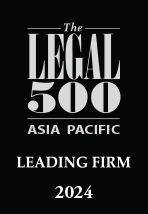Limelight Articles
Protecting the public – a lens on addressing the misconduct of health professionals
Introduction
Health practitioners are regulated under a scheme governed by the National Law. In keeping with other professional regulatory models, the National Law has a focus on the protection of the public and the profession when considering the appropriate sanction when a health practitioner’s conduct falls below the relevant professional standard.
The decision in Optometry Board of Australia v Bhoola [2021] SASC 51 concerns an appeal from a decision of the South Australian Civil and Administrative Tribunal (SACAT) in relation to disciplinary proceedings involving an optometrist and reiterates the key considerations involved in a determining the appropriate sanction for a health practitioner.
Facts
Mr Bhoola worked as an optometrist at a Specsavers store in Adelaide. From mid 2015, one of his colleagues, Ms McKernan, became aware that there was an increase in the number of glasses being returned to the store for remakes. All of the glasses being returned to the store were the subject of prescriptions formulated by Ms McKernan.
In January 2016, Ms McKernan became suspicious that Mr Bhoola had logged into her test results and had made alterations to the prescriptions, which led to the glasses being dispensed in accordance with the altered prescription, rather than the prescription she had formulated.
Specsavers conducted an investigation and discovered that between 4 February 2015 and 19 January 2016, Mr Bhoola (or someone using his log in details) had altered 410 prescriptions. The cost of the investigation to Specsavers in the investment of staff time exceeded $50,000.
Sacat Findings
The Optometry Board of Australia (Board) filed a complaint against Mr Bhoola in the SACAT.
Following a contested hearing, SACAT found that the alterations to the prescriptions were made by Mr Bhoola deliberately, without clinical justification and contrary to the interests of the patients concerned. It found that these actions put the welfare of the patients at risk.
SACAT found Mr Bhoola’s conduct to be “substantially below the standard reasonably expected of a registered health practitioner”. It found that his conduct was dishonest and done with knowledge that it would put the welfare of patients at risk. It had a significant adverse impact on Ms McKernan. SACAT had no difficulty in finding that the conduct amounted to professional misconduct.
SACAT concluded that Mr Bhoola was not a fit and proper person to be registered as an optometrist. In determining sanction, SACAT expressed concern that Mr Bhoola continued to deny responsibility for the conduct that was found to amount to professional misconduct. SACAT expressed “some reluctance” in imposing a period of suspension, as Mr Bhoola had been employed on a full time basis as an optometrist since January 2017. It took into account the favourable character references prepared on his behalf and was satisfied that he was of good character, save for the misconduct that was the subject of the findings.
SACAT reprimanded Mr Bhoola, cancelled his registration as an optometrist and disqualified him from applying for registration as an optometrist for a period of one year.
Appeal to the Supreme Court of South Australia
The Board appealed the sanction imposed by SACAT to the Supreme Court of South Australia.
The Board’s appeal was based on the following four grounds:
- SACAT failed to make a number of key findings when approaching sanction including the nature of the harm and a finding that Mr Bhoola remained at risk of repeating the conduct;
- SACAT wrongly approached the question of sanction by giving significant weight to the consequences to Mr Bhoola losing his employment upon the cancellation of his registration and the subsequent period of disqualification;
- SACAT was wrong to find that the extent of the financial impact of Mr Bhoola’s misconduct on Specsavers was not relevant;
- SACAT was wrong to impose a sanction that was inadequate to protect the public and to maintain the standards in the profession.
In considering the appeal, the Supreme Court found that all grounds of appeal advanced by the Board were made out. In particular the Supreme Court found,
- SACAT erred in not making an assessment of the degree to which Mr Bhoola’s conduct departed from the proper standard in the profession and that “[SACAT] was required to articulate its assessment of the degree to which the conduct of [Mr Bhoola] departed from the proper standard.”
- SACAT erred in not making a specific finding in respect of the Mr Bhoola’s likelihood of reoffending;
- SACAT erred in taking into account the Mr Bhoola’s loss of employment upon cancellation of his registration. It also erred by elevating the importance of Mr Bhoola’s character evidence too highly;
- SACAT erred in finding that a detailed quantification of the costs incurred by Specsavers in respect of the investigation it carried out was not relevant to its task in determining an appropriate sanction. This decision failed to consider that employers are members of the public who deserve protection through registration of their professional employees;
- “The alteration of patient records is extremely serious. It may have an impact on the patient’s health at the time, and in the future when others may seek to rely on the record…Given that the respondent’s conduct in this regard was prolonged, deliberate and clearly against the interests of the patient, it was incumbent on the SACAT to make a finding that the respondent’s conduct feel well below the standard expected of a registered optometrist. It required a sanction which sent a clear message to other practitioners that unauthorised and unjustified alteration of patient records will not be tolerated.”
- The imposition of a period of disqualification for twelve months was insufficient.
The Supreme Court allowed the appeal, set aside SACAT’s disqualification from applying for registration as an optometrist for a period and twelve months and substituted a disqualification period of five years.
Conclusion
This decision reiterates the purpose of disciplinary proceedings as protective rather than punitive as articulated by King CJ in Craig v Medical Board of South Australia [2001] SASC 169.
In the context of a disciplinary matter, decision makers must consider the impact of a practitioner’s offending on the public at large which can include their employers as well as patients.
The consequences of a period of cancellation of registration and disqualification upon the individual practitioner should not be elevated too highly in the context of the protective jurisdiction.
Lack of insight on the part of the practitioner and failure to accept responsibility for the conduct are relevant when assessing the appropriate sanction.









